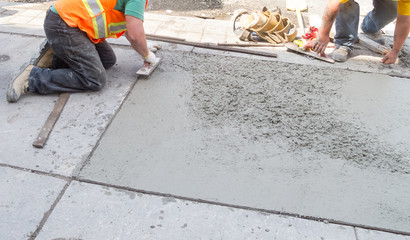Surface defects are the easiest to fix. But fixing this type of damage requires that you do it correctly. The repair needs to be done with the correct materials and workmanship to fix it properly. You should consult a qualified person who will analyze the problem and come up with an appropriate repair procedure. Depending on the severity of the defect, the repair process may involve a number of steps. For example, you may need to prepare the surface, apply a filler, and cure it. And, of course, you must do a good job of preparing the area for repair.

A full-depth Concrete Companies remove damaged concrete from a building’s structure. You’ll need to replace the damaged concrete with new concrete if the damage is larger than one square foot. However, this process is much more expensive than a partial repair and may take weeks to complete. If you don’t have the time to wait for an engineer, a concrete repair company will take care of it for you at a reasonable price.
Before beginning any concrete repair project, you must make sure that the area is adequately prepared. To start with, you must remove crumbling areas. You can use a heavy-duty trowel to do this, but larger areas will require a sledge or cold chisel. After you’ve removed the crumbling area, make sure to vacuum the area and hose it down to a solid base. Next, you should choose the type of concrete repair you want to carry out.
Fortunately, there are many options for fixing this type of concrete damage. While you can always choose a DIY method and use the right materials, it’s best to consult a professional to ensure the quality of the repair. Listed below are some tips for fixing concrete problems. It’s important to note that the type of concrete repair you choose will depend on the size of the aggregates. You can try a mix of cement and water to see if it works.
Before you start a concrete repair, you’ll need to understand why the concrete has deteriorated. This information will help you choose the right materials for the repair process. Some of the steps in this process involve reviewing available design documents, conducting tests, and analyzing corrosion activity. This will help you determine whether the concrete repair procedure is effective and efficient for your project. You’ll also need to choose a concrete repair technique that will fit the situation perfectly.
After determining the severity of the damage, you’ll need to choose a suitable concrete repair mortar. There are many types of repair mortars available. Depending on the type of concrete, you can select a repair mortar that meets your requirements and budget. Just make sure that the material has a similar set time as the concrete you’re repairing. Using a rapid-setting mortar on a busy street will reduce the risk of cracking after placement.
Cracks in the concrete can affect the structural integrity of a building. If they continue to develop, they can cause significant damage to a home’s foundation. You should seek out the expertise of a concrete repair company right away if you notice a problem. If you can’t afford a total replacement, consider leveling the concrete to fix it instead. This is a less expensive option in many cases than tearing out the concrete completely.
Cracks in concrete are typically caused by several factors, including thermal expansion, settling, and curing. Crack repairs that prevent water from flowing into the concrete should use a chemical bonding agent. This method requires a skilled contractor. Injection of epoxy is a more permanent solution than a repair made with epoxy. However, it is not recommended for active cracks. Instead, a water-tight sealant can be applied to the crack. While this solution provides a temporary fix, it will not fix the crack permanently.
If the crack is large, you should use a cement-based repair product instead of latex-based. If the crack is wide, you should use a quick-setting cement that will dry into a stiff putty. These products have a longer drying time, and you should also choose a product that allows you to reuse the same application. For small cracks, you may want to use an acrylic fortifier. It will help you apply the cement properly and reduce the curing time.
Damage caused by chemical factors is different from that caused by physical factors. The primary chemical cause of concrete damage is loss of mass, and the leaching of cement paste makes the material more porous. As a result, it is more susceptible to abrasion. Another cause of concrete damage is overloading and construction faults. And while concrete repair is vital for maintaining the structural integrity of a structure, it also needs to address aesthetic concerns. So, it’s important to take the time to understand and repair these problems as soon as you notice them.